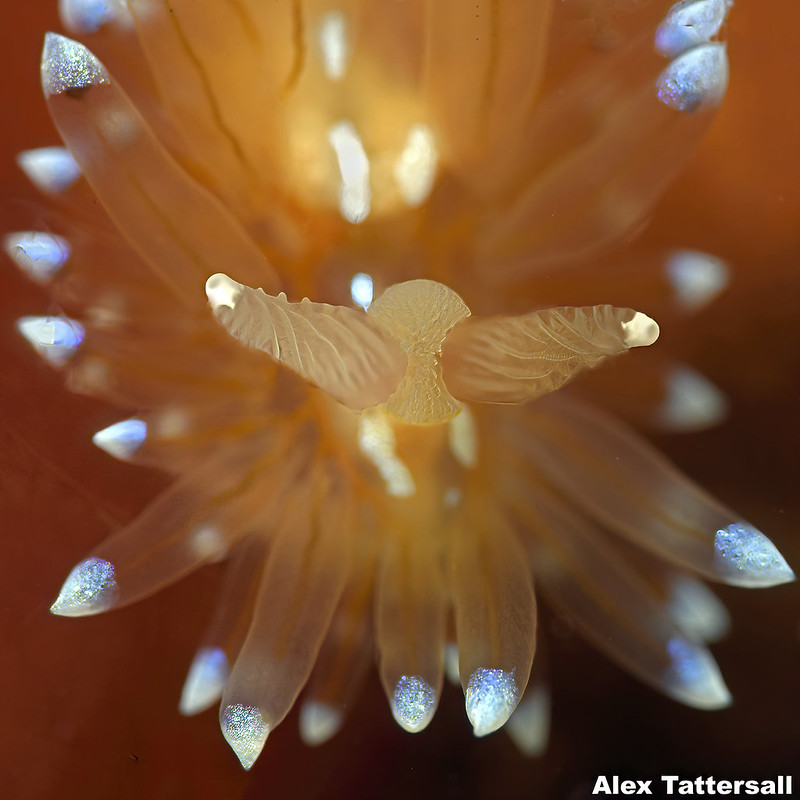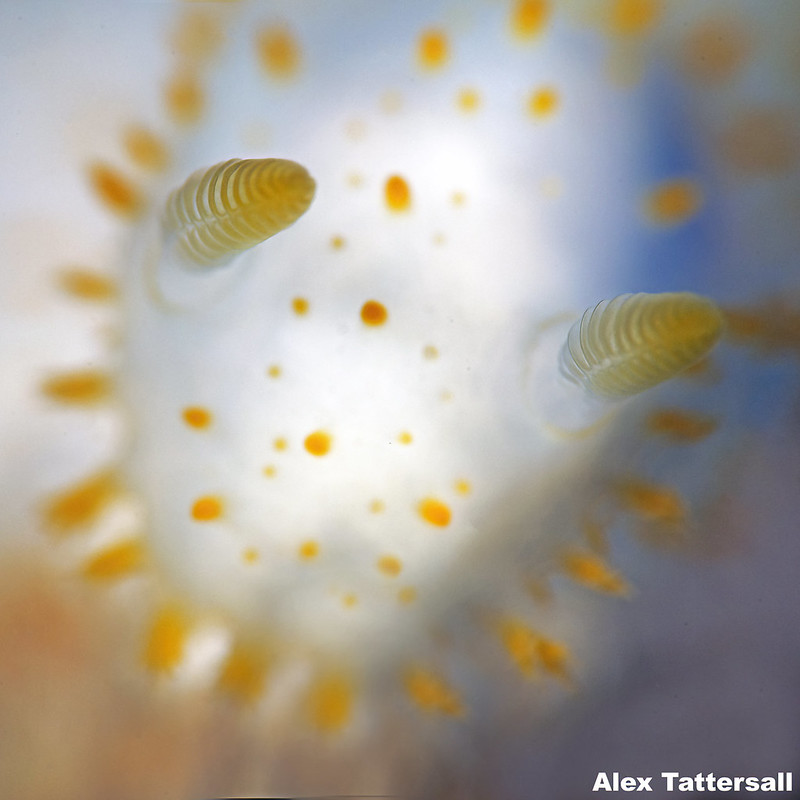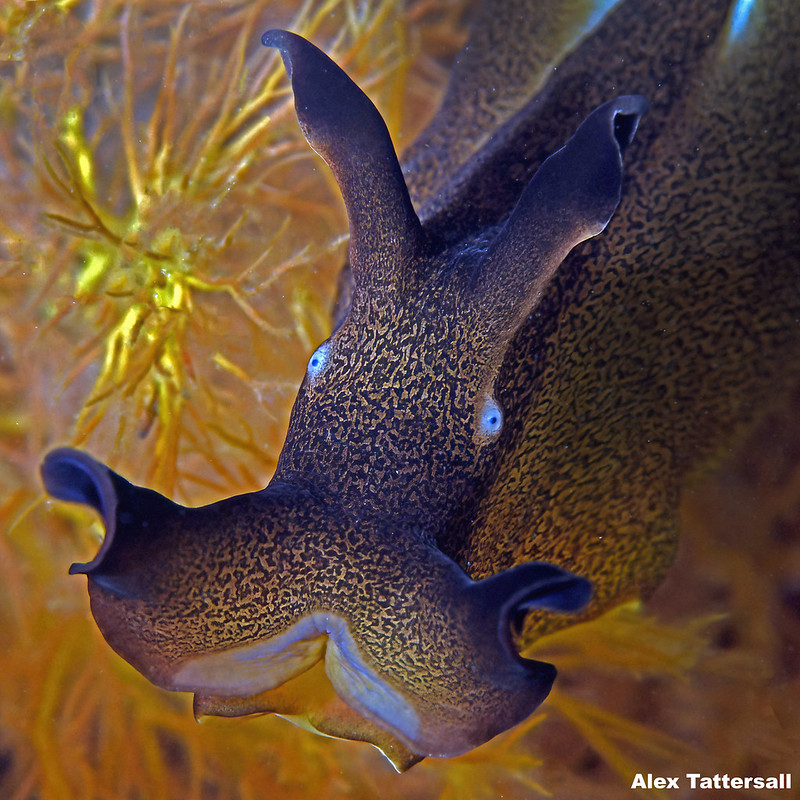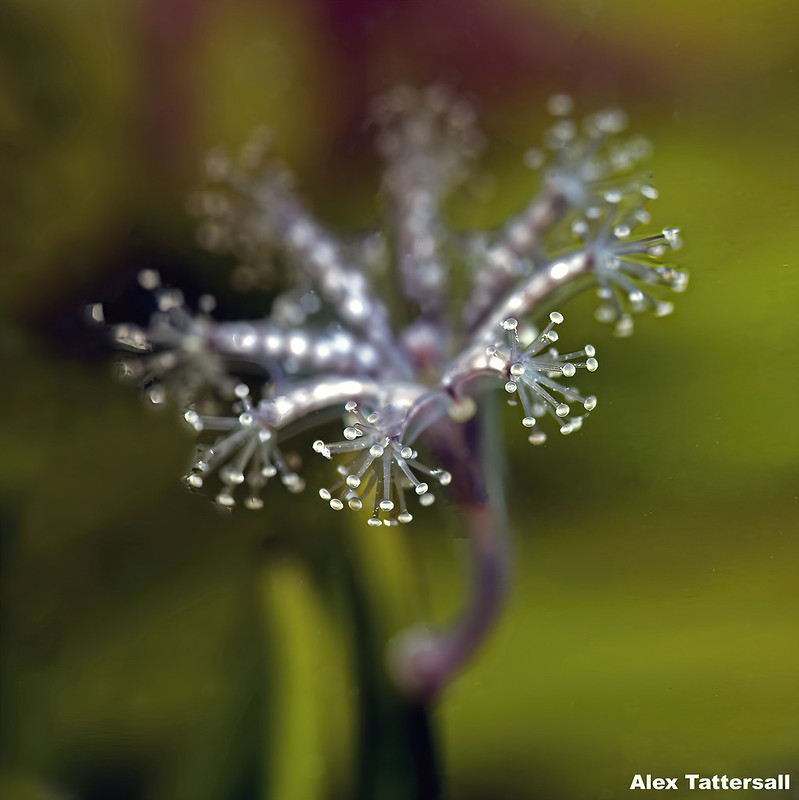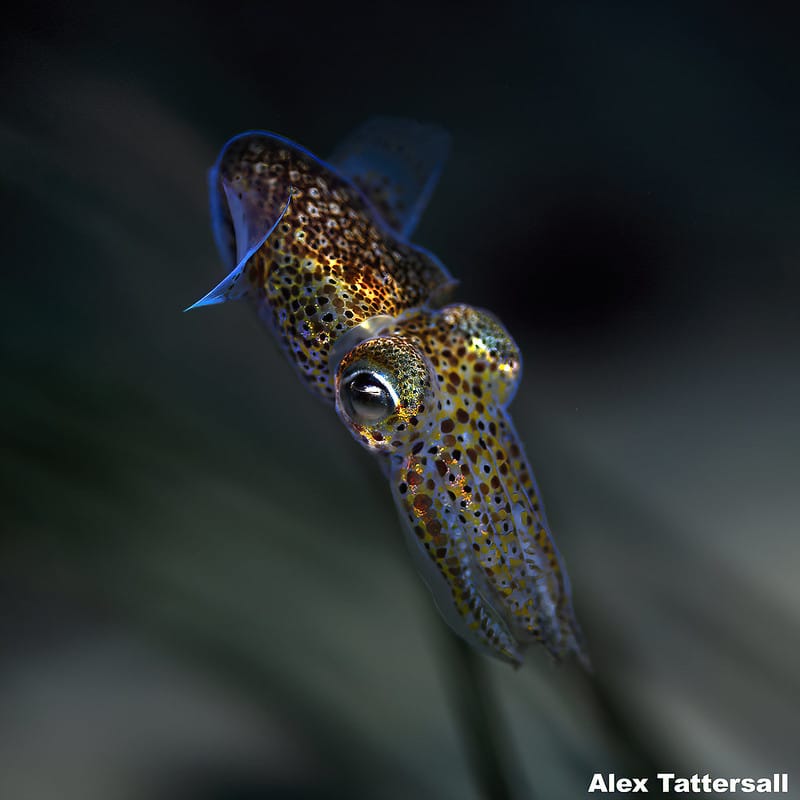News
Celebrating UK Diving with Dr. Alex Tattersall: Gallery 1

Alex has been enjoying diving locally during the pandemic and we will be sharing some of his incredible images taken on the south coast of England over the coming days. Here is what he has to say:
I am acutely aware of how lucky I am to live on the South Coast at this moment in time and with overseas trips being put on hold, I’ve been able to look to my own backyard to find sanctity and sanity, a brief escape from the madness of the world. In spite of my good fortune to live so close to some choice UK shore diving, it is still a very different diving experience from that of a luxury liveaboard, and it takes some careful planning and a lot more physical effort and dedication. Without local guide/spotters, you are on your own to find interesting subjects and photogenic situations, and at first sight, this seems impossible in the dark brown silt and sand. However, patience, sensitivity to the environment, and cumulative experience do bring their rewards.
I live in Bournemouth, some 45 minutes from my most visited dive site this year, Swanage Pier. A group of photo friends and I started diving as lockdown was lifted and have continued throughout the season and are still diving now when conditions allow. The beauty of this has been the opportunity to watch the site’s flora, fauna and even topographical features change in response to weather conditions and seasonal variation. We‘ve watched nudibranch species arrive, proliferate, lay eggs and then disappear. We’ve witnessed sea hares arrive in their masses, mate in huge groups and then vanish overnight. We’ve seen wrasse nesting, blennies laying and guarding eggs, anemone shrimp grow from teeny-tiny to almost filling their host snake locks anemone, jellyfish come and go in waves, and (shh) even the magical spiny seahorse pairing, brooding and giving birth in front of our eyes. As the nights draw in and the water cools (and for however long the South West continues to elude more serious lockdown), we are looking forward to more winter and night diving to briefly follow the lives of colder water and more nocturnally active species (although motivating ourselves in colder, damper conditions will be a challenge!).
Knowing that overseas diving is largely on hold (plus the marked slowdown in my day to day workload) has allowed me the time to take a new perspective on local UK diving. I have been able to approach each dive with a much greater level of mindfulness coming from a drop in urgency to make each dive as productive as possible. Returning day after day to the same few sites, revisiting the same critters, having more numerous windows into the lives of the animals has all afforded me with a much deeper level of intimacy with the local seas, for which I hope I will be ever grateful. 2020’s post lockdown sites for me were Swanage Pier, Kimmeridge Bay, the Weymouth/Portland region and I managed to sneak out for a three day break to Lundy Island.
I am also in the fortunate position of having access to new and exciting underwater photo products (what would an article from me be without a few commercial plugs?). Visiting the same sites, I could return with different lens and lighting combinations with ideas as to how to tackle the same subjects from very different photographic perspectives. Much of the shore diving on these sites, as you can see from the photos in this article, lends itself mainly to close up and macro/supermacro photography with windows of excellent visibility (and tangible excitement) when I was able to unleash the Nauticam Wide Angle Conversion Port on the critters. We have also recently received the Nauticam EMWL-1 (Extended Macro to Wide Lens) which is a long probe lens attached to the front of the flat macro port offering wide-angle perspectives of macro subjects. I had the pleasure of test driving the new Retra Pro flashes (with its ability to sync to shutter speeds far higher than the usual 1/250 as you can see in the jellyfish and sunburst shot) and the Backscatter miniflash (the easiest and most versatile snoot light option we have used), to understand first-hand how both are opening up new and exciting possibilities for underwater photography.
I’ll sit back now and let you enjoy the images. My final thought having revisited the image selection for this article is that I’d have never expected to have been able to repeat dive these same sites and to find such diversity and beauty in our local marine flora and fauna. If there is any upside for me to the current difficult situation, it could be that I would never have made to time to discover this had international dive travel still been an easy option.
Alex is the UK distributor for Nauticam and many more underwater photography manufacturers. You can see more of his beautiful images and buy some of the kit he used to take them by visiting his website here.
Gear News
Scubapro Free Octopus Promotion 2024

Free Octopus with every purchase of a SCUBAPRO regulator system
Just in time for the spring season, divers can save money with the FREE OCTOPUS SPRING PROMOTION! Until July 31st SCUBAPRO offers an Octopus for free
with every purchase of a regulator system!
Get a free S270 OCTOPUS with purchase of these combinations:
MK25 EVO or MK19 EVO with A700
MK25 EVO or MK19 EVO with S620Ti
MK25 EVO or MK19 EVO with D420
MK25 EVO Din mit S620Ti-X
Get a free R105 OCTOPUS with purchase of the following combinations:
MK25 EVO or MK19 EVO with G260
MK25 EVO or MK17 EVO with S600
SCUBAPRO offers a 30-year first owner warranty on all regulators, with a revision period of two years or 100 dives. All SCUBAPRO regulators are of course certified according to the new European test standard EN250-2014.
Available at participating SCUBAPRO dealers. Promotion may not be available in all regions. Find an authorized SCUBAPRO Dealer at scubapro.com.
More information available on www.scubapro.com.
Blogs
Northern Red Sea Reefs and Wrecks Trip Report, Part 3: The Mighty Thistlegorm

Jake Davies boards Ghazala Explorer for an unforgettable Red Sea diving experience…
Overnight, the wind picked up, making the planned morning dive a bit bumpy on the Zodiacs to the drop point on Thomas Reef. There, we would dive along the reef before descending through the canyon and then passing under the arch before ascending the wall with a gentle drift. The site provided great encounters with more pelagic species, including shoals of large barracuda, tuna, and bigeye trevally.
Once back on the boat, it was time to get everything tied down again as we would head back south. This time, with the wind behind us, heading to Ras Mohammed to dive Jackfish Alley for another great gentle drift wall dive before then heading up the coast towards the Gulf of Suez to moor up at the wreck of the Thistlegorm. This being the highlight wreck dive of the trip and for many onboard, including myself, it was the first time diving this iconic wreck. I had heard so much about the wreck from friends, and globally, this is a must on any diver’s list. Fortunately for us, there was only one other boat at the site, which was a rarity. A great briefing was delivered by Ahmed, who provided a detailed background about the wreck’s history along with all the required safety information as the currents and visibility at the site can be variable.

Kitting up, there was a lot of excitement on deck before entering the water and heading down the shoreline. Descending to the wreck, there was a light northerly current which reduced the visibility, making it feel more like the conditions that can be found off the Welsh coast. At 10m from the bottom, the outline of the wreck appeared as we reached the area of the wreck which had been bombed, as our mooring line was attached to part of the propeller shaft. Arriving on deck, instantly everywhere you looked there were many of the supplies which the ship was carrying, including Bren Carrier tanks and projectiles that instantly stood out.

We headed around the exterior, taking a look at the large propeller and guns mounted on deck before entering the wreck on the port side to take a look in the holds. It was incredible to see all the trucks, Norton 16H, and BSA motorcycles still perfectly stacked within, providing a real snapshot in time.

Overall, we had four dives on the Thistlegorm, where for all of the dives we were the only group in the water, and at times, there were just three of us on the whole wreck, which made it even more special, especially knowing that most days the wreck has hundreds of divers. Along with the history of the wreck, there was plenty of marine life on the wreck and around, from big green turtles to batfish, along with shoals of mackerel being hunted by trevally. Some unforgettable dives.

The final leg of the trip saw us cross back over the Suez Canal to the Gobal Islands where we planned to stay the night and do three dives at the Dolphin House for the potential of sharing the dive with dolphins. The site, which included a channel that was teeming with reef fish, especially large numbers of goatfish that swam in large shoals along the edge of the reef. These were nice relaxing dives to end the week. Unfortunately, the dolphins didn’t show up, which was okay as like all marine life they are difficult to predict and you can’t guarantee what’s going to be seen. With the last dive complete, we headed back to port for the final night where it was time to clean all the kit and pack before the departure flight the next day.

The whole week from start to finish on Ghazala Explorer was amazing; the boat had all the facilities you need for a comfortable week aboard. The crew were always there to help throughout the day and the chefs providing top quality food which was required after every dive. The itinerary providing some of the best diving with a nice mixture of wreck and reef dives. I would recommend the trip to anyone, whether it’s your first Red Sea liveaboard in the Red Sea or you’re revisiting. Hopefully, it’s not too long before I head back to explore more of the Red Sea onboard Ghazala Explorer.

To find out more about the Northern Red Sea reef and wrecks itineraries aboard Ghazala Explorer, or to book, contact Scuba Travel now:
Email: dive@scubatravel.com
Tel: +44 (0)1483 411590
Photos: Jake Davies / Avalon.Red
-

 News3 months ago
News3 months agoHone your underwater photography skills with Alphamarine Photography at Red Sea Diving Safari in March
-

 News3 months ago
News3 months agoCapturing Critters in Lembeh Underwater Photography Workshop 2024: Event Roundup
-

 Marine Life & Conservation Blogs2 months ago
Marine Life & Conservation Blogs2 months agoCreature Feature: Swell Sharks
-

 Blogs2 months ago
Blogs2 months agoMurex Resorts: Passport to Paradise!
-

 Blogs2 months ago
Blogs2 months agoDiver Discovering Whale Skeletons Beneath Ice Judged World’s Best Underwater Photograph
-

 Gear Reviews3 months ago
Gear Reviews3 months agoGear Review: Oceanic+ Dive Housing for iPhone
-

 Marine Life & Conservation2 months ago
Marine Life & Conservation2 months agoSave the Manatee Club launches brand new webcams at Silver Springs State Park, Florida
-

 News3 months ago
News3 months agoWorld’s Best Underwater Photographers Unveil Breathtaking Images at World Shootout 2023


